How television has been revolutionised
Changes in the world of TV are having a major impact on the way VFX is used and created. We speak to some of the studios leading the charge...
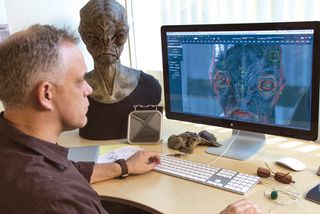
The relationship between cinema and television has always been a complex one. When TV became ubiquitous in the 1960s, it spelled the end for the Golden Age of Hollywood. The movie studios fought back by trying to differentiate the two with gimmicks, more extreme material and even restrictive contract clauses for actors, but movie ticket sales never fully recovered.
Yet, the threat of television was arguably also indirectly responsible for the emergence of the culturally significant 'New Hollywood' era and then the rise of the blockbuster, once again turning cinema into a culturally and financially relevant proposition and putting a safe distance between the two formats.
Now, however, the lines have blurred again with the dawn of what has been dubbed a new Golden Age of Television. Partially driven by cable programming in the US and more recently by internet-based programme providers, home audiences are hungrily devouring more ambitious and expensive long-form shows.
Often created with the involvement of A-list Hollywood talent in front of and behind the camera, this new breed seeks to emulate the visual aesthetic of film, down to the extensive and ambitious use of digital VFX - especially so in the case of the fantasy, sci-fi and period costume shows that now have mass appeal.
Sea change
"There's been a definite sea change in the world of television," agrees Ivor Middleton, head of 3D at Vine, the studio responsible for effects work on BBC shows Merlin and Atlantis. "We now have scripts that are equal to those written for feature film, we have the big name stars, and the visual effects are also following suit. Having spent the previous 15 years working on film I really don't feel there is a great deal of difference between the two anymore."
While Ivor says that the studio's aim is to use its collective experience to bring film quality to television, there are fundamental differences between a programme like Atlantis and a feature film project in terms of budget, schedule and shot throughput.
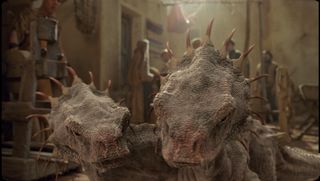
"We're doing over 1,000 shots per show without the kind of resources you would expect if dealing with that sort of workload on a film. The nature of the shoot can also be very quick, and when you've got 13 episodes to deal with, the schedule is relentless."
Get the Creative Bloq Newsletter
Daily design news, reviews, how-tos and more, as picked by the editors.
In other words, while audiences expect and programme-makers demand visual effects to rival those produced for film, the conditions under which artists must create them are often very different. So just how can studios marry the budgetary and scheduling demands of series-based work with such high expectations?
TV now has scripts equal to those written for feature film, and the visual effects are also following suit
"Good artists are essential, but to keep things on track ultimately requires precise planning," says Sven Martin, VFX supervisor at Pixomondo, a studio that regularly provides effects work for Hollywood as well as for series such as Game of Thrones.
"You need to be clear from the beginning what is possible within the time and budget, and be aware that there's no room to experiment with multiple variations of an idea, or to risk going down any dead-end roads," he explains. "We have to be careful about where to build in complexity, making sure we don't add detail where it won’t be seen."
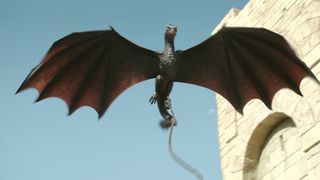
Collaborative integration
A good working relationship between the main production team and the visual artists is clearly vital for shows that rely heavily on high-quality visual effects and animation. While the film effects industry has gone truly global, with an ever greater emphasis on studios working remotely, there's a greater need for closer interaction in the efficiency-driven world of television.
Over at Zoic Studios, creative director Andrew Orloff says that its Vancouver base enables the studio to work face-to-face with the production and creatives on a show like Falling Skies: "The team is able to work directly with the artists to provide feedback and craft the overall look in the earliest production phase, coming on board during scripting to discuss with the writers and producers what the CG characters can do and what they will be like in the upcoming season.
"Concept artists are brought on board as decisions are made about the nuances of each creature: What kind of planet are they from? How do they move? Are they relatable or scary? How do they interact with the other creatures and characters? All of these key decisions shape both how the creatures will look and move.”
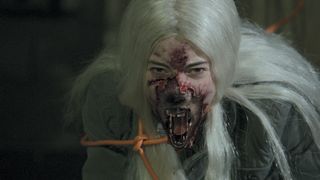
At Vine, studio owner Michael Illingworth says they effectively act like an in-house department on Atlantis, working alongside the production designer to assess what sets will be built practically and what will be digitally extended and carefully working through the scripts with the producers to find the best way tell the story and give it the necessary scope.
"They're well versed with visual effects, so appreciate it would be nuts to have 200 creature close-ups, although we also try to manage expectations, so if something has the potential to hog all the resources then we let them know so they can rein expectations in."
While it's standard practice to start building assets as early in production as possible, Michael says it's particularly vital in this field. "You need to be able to hit the ground running as soon as the plates come in, and then it's crucial to make sure everything progresses simultaneously, bringing every area up to the required quality level."
You need to be able to hit the ground running as soon as the plates come in
Naturally, the real animation work can only begin once plates have been delivered, but even at this point there's a need to work closely with editorial, to ensure resources aren't wasted. Andrew Orloff says that on Falling Skies they always provided simple proxy models for the editing team to work with: "This allows the editors to have a better idea of what they want in the frame so they are able to create the final shots before the actual animations are completed."
Michael Illingworth notes that it's a good relationship with the main production team on a show that makes this kind of thing possible. "With film things are generally taken to a fairly finished state before presenting them, whereas on a show like Atlantis we're able to give them a feel for how something is progressing and can safely hand them the first bash of a comped CG creature to put into the cut.
"And because we're not bidding on a shot-by-shot basis it's not a problem if they want to extend a scene. Our artists will often suggest additional shots that will improve the way a sequence works."
Generalist versus specialist
The standard advice for artists looking to get a foot in the door in animation or visual effects has been to specialise if aiming for film work or strive to be a generalist in order to appeal to studios focusing on television work.
Indeed, Ivor Middleton says he always favours artists with a generalist background. "We’re careful not to pigeonhole people," he explains. "Hard surface modellers can end up doing creatures, and artists might handle fur grooms as well as lighting. Our approach is to break the shots down into chunks and let the artists get on with it. They take ownership and are happy to run with ideas."
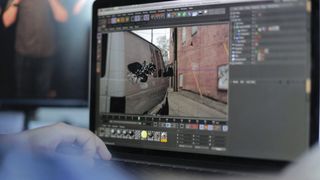
This contrasts with Pixomondo's approach, however, where they strive to deliver movie-quality effects for TV by taking the same specialised approach used on film projects. "We're very much department-orientated, as it's the only way for us to ensure the quality remains consistently high and the work is delivered on time," explains Sven.
"It's very important that we don't have to wait until a model is completely finished before starting on the animation or handing it over for lighting, for example, which you'd have with a generalist-based team. We have all departments working in parallel."
Affordable tools
Of course it's not only the changing face of TV programming that has changed the game for effects and animation studios. Concurrent to the push for shows with higher production values has been the democratisation of high-end tools. "In the last couple of years it's become possible to get a lot of mileage from affordable software for things that would previously have required a lot of in-house development," says Ivor Middleton.
"We're using both Yeti and SpeedTree here, for example, neither of which is very expensive. ZBrush has become an amazing tool, of course. And even Arnold is very reasonably priced, providing a fantastic skin shader right out of the box and now fluids support, too.
In the last couple of years it's become possible to get a lot of mileage from affordable software
"With TV work it's necessary to work very efficiently and get shots to a final state by the second or third iteration, and physically plausible rendering really helps with that. Then there are things like the iStar, a 360-degree camera originally developed for crime reconstructions, and Agisoft’s Photoscan photogrammetry tool, which costs just a hundred pounds or so. The great thing about these tools being so cheap is that it’s not prohibitive to try new ones out."
The push to deliver great results within the constraints imposed by TV can clearly be a great catalyst for creative problem solving - be it simply through sympathetic shot framing and editing, selective deployment of more time-and-cost prohibitive elements, such as simulations, or through systems that blend digital techniques with practical effects work in order to better and more efficiently achieve physical realism.
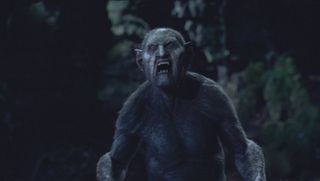
Exciting times
These are exciting times with artists addressing the needs of this new age of television. The days when this corner of the industry was viewed as the poor relation to the one serving Hollywood are arguably over, and what was once often viewed as merely an entry point and stepping stone to a more glamorous career in film increasingly looks like the more desirable option.
While the movie effects industry remains in turmoil, this one - while competitive - is currently thriving, and that doesn't look likely to change any time soon. Audiences have grown used to watching TV shows with high production values. There's no going back.
Words: Mark Ramshaw
This article originally appeared in 3D World issue 179.

Thank you for reading 5 articles this month* Join now for unlimited access
Enjoy your first month for just £1 / $1 / €1
*Read 5 free articles per month without a subscription

Join now for unlimited access
Try first month for just £1 / $1 / €1
The Creative Bloq team is made up of a group of design fans, and has changed and evolved since Creative Bloq began back in 2012. The current website team consists of eight full-time members of staff: Editor Georgia Coggan, Deputy Editor Rosie Hilder, Ecommerce Editor Beren Neale, Senior News Editor Daniel Piper, Editor, Digital Art and 3D Ian Dean, Tech Reviews Editor Erlingur Einarsson and Ecommerce Writer Beth Nicholls and Staff Writer Natalie Fear, as well as a roster of freelancers from around the world. The 3D World and ImagineFX magazine teams also pitch in, ensuring that content from 3D World and ImagineFX is represented on Creative Bloq.
